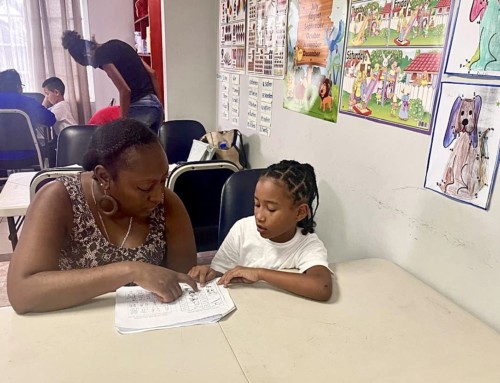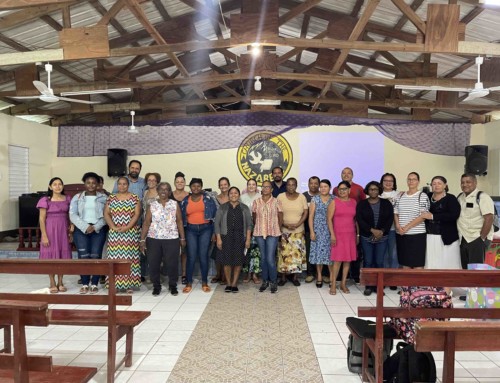By: Marlen E. Soria
In recent years, the migratory flow has grown in countries worldwide. It is no longer a secret for all of us that the United States is no longer the only country facing this situation, but it is still one of the countries with the most significant migratory flow worldwide. What is sought to achieve with this text? What are the causes and effects that migration is having on migrants? Are countries like the United States and others prepared to face this situation? In this text, we sought a way to address the leading causes or relationship between the high levels of stress that immigrants (including children and adults) face with depression and anxiety, all due to the limited support and resources that the different entities must support immigrants. We hope it is helpful to everyone who reads it, especially those who may be facing an acculturation situation.
Acculturation, specifically for children, can be complex and challenging and lead to many forms of stress, including “acculturation stress.” This arises because of the tension of adapting to a new cultural environment while maintaining ties to their cultural identity. This stress is linked to adverse mental health outcomes; among these is depression, especially for immigrants and minority children population. Social workers must do further research to find the relationship between acculturation and depression and the impact on children’s well-being.
One of the unique challenges of this process is to face pressure to adjust to the new culture while still facing dissension with their cultural heritage and identity. This increases the risk of mental health issues among children, like depression. It is crucial to develop support and promote mental health and well-being for immigrants, especially for kids. Some of the studies that have been done have provided data on the subject; one of those studies is “Emotional and Behavioral Problems in Migrant Children and Adolescents in American Countries: A Systematic Review.” This study was carried out between 2009 and 2013 among migrant children and adolescents; the purpose was to study the current health status of each of them. Most of these studies were conducted in the United States and Canada.
Although the migration factor was not a risk factor in terms of depression among these groups, it does represent a risk factor for second-generation migrant children and especially for the groups of Asians. Among family groups, one of the risks is developing high stress due to acculturation and low language competence and discrepancies between parents and children due to cultural differences. Another article that supports the importance of mentally caring for children and people in general who are dealing with acculturation stress is “Acculturative Stress Among Documented and Undocumented Latino Immigrants in the United States.” This article discusses three main challenges immigrants present (separation from family, loss of traditions, and language difficulties). These increased the burden of stress on immigrants when, after 1996, the anti-immigrant law became more severe. Added to this is the fear that undocumented families feel of being separated through deportation. It is crucial to emphasize the fear that exists among children of losing their parents due to deportation.
Many children fear that when they return from school, their parents will no longer be at home or that they will go out to work and not return. This fear is a stress that no child deserves to go through. Every child deserves to be sure their mom, dad, and siblings will always be at home waiting for them. But unfortunately, this fear is becoming more and more latent among undocumented families.
So What? Understanding the relationship between acculturation stress and depression among immigrants, particularly children, is crucial for social work for the following reasons:
- A social worker is vital in helping individuals or families experiencing mental health challenges and providing support through interventions. Some of the interventions that a social worker can provide are counseling, psychoeducation, group support, and referral to a mental health professional.
- A social worker generally knows how to connect clients to different cultural contexts and how this connection can affect their clients’ mental health. That is why he can give you strategies to overcome these challenges. Social workers generally tend to have empathy and respect for their client’s processes and give them the practical support that every migrant needs as an individual and a family.
- A social worker generally knows how to connect clients to different cultural contexts and how this connection can affect their clients’ mental health. That is why he can give you strategies to overcome these challenges. Social workers generally tend to have empathy and respect for their client’s processes and give them the adequate support that every migrant needs as an individual and for family.
- A social worker knows that acculturation stress can have consequences on a child’s academic performance, social relationships, and overall quality of life, which can lead to long-term mental health challenges and negative consequences. , including academic failure, substance abuse, and even worse, suicide; social workers can identify and manage these risks early, providing the necessary support to mitigate the consequences and promote resilience among patients, as well as strategies to cope with each one of the challenges.
- One of the main jobs of social workers is to intervene and commit to investigating policies that protect minorities, advocate for knowledge and change, inform about new practices, and promote social changes. They are ideal people to support and intervene in developing programs that respond, a curriculum that trains, and initiatives that reduce the stress that acculturation causes, thus promoting equity in mental health for all, especially children.
The relationship between stress, depression, and acculturation among immigrants, especially children, has attracted the attention of social workers and psychologists because it represents a challenge at a psychosocial, social, and cultural level that individuals face when they are adapting to a new cultural environment. This cultural change represents a clash between values, customs, norms, what is expected, and our expectations of the new culture. Depression, on the other hand, is the consequence experienced due to this change since this stress causes prolonged feelings of sadness, hopelessness, loneliness, fear, constant struggle, fear, and loss, among others in the individual.
Berry’s (1980) acculturation model explains an individual’s entire process in this change. Among them is the “Assimilation” process, which occurs when an individual adopts the new cultural norm over their own culture; this is followed by the “Separation” process, in which the individual rejects the new culture to preserve the one of origin, the third stage is “Integration,” which makes the individual capable of adopting the cultural norms of the new culture while maintaining their own, this is also known as biculturalism. The last stage is “Marginalization,” which occurs when the individual rejects both cultures.
As mentioned at the beginning of this study, there are several stress factors that an immigrant faces, which lead people to accumulate high levels of it in their system until they become depressed. In the study carried out by Suarez-Orozco and Qin (2006), it was found that Latino adolescents who had experienced high levels of stress due to acculturation were more likely to present symptoms of depression than the rest of their peers. Depression is now a considerable concern among immigrant groups, especially children; most of them have socioeconomic disadvantages, discrimination, few opportunities, etc., making the minority group more prone and vulnerable to depression.
The literature addresses the relationship between acculturation stress among migrants and immigrant children and depression by understanding the context of each factor and how social workers and other professionals can develop interventions that culturally sensitize people. Giving them support and providing services that promote the comprehensive well-being of immigrants helps them face each challenge and the present changes.
So. What could be the nature of the relationship between acculturation stress and depression among immigrant children? The relationship may be the high stress levels experienced while adapting to a new culture.
What could be the factors that help mediate and positively influence the relationship between acculturation stress and depression among immigrant children?
These factors could be social support, building a strong cultural identity, and strategies that help minimize the tension between acculturation stress and depression.
This research study is aimed primarily at people facing a stress process due to acculturation to a different culture. The focus will be primarily on children. Some of the challenges that adults can face in the acculturation process are the language barrier, new social norms that are foreign to people, the economic challenges that leaving the comfort zone can cause, and adapting to a system of life utterly different from what one was used to having.
All the stress generated by this new lifestyle can lead to processes of anxiety and depression, feelings of isolation, and the difficulty of forming new social circles. This is coupled with the pressure to protect and preserve the culture of identity while still adapting to the new one. All of this leads to internal conflicts in the person and contributes to extreme symptoms of stress, anxiety, and depression.
It is imperative to mention that adults are not the only ones facing this situation during acculturation. Children also experience this process directly as they navigate between two or even more cultures different from their own, for example, their parents’ culture. If there is a third move, a new culture other than that of their parents and theirs, this happens in children from the third culture. All of this can lead them to have identity struggles and conflicts and increase their level of stress as they are faced with new languages, pressure from their classmates to adapt to new social norms, and the feeling of not belonging within the new culture. This directly impacts their emotional life, their academic performance, and the social relationships they have.
The variables that will be observed, measured, and analyzed in the research are primarily related to stress and culture. The focus is acculturation stress, which includes the language barrier, discrimination, cultural adjustment difficulties, and conflicts between preserving the culture of origin and adapting to the new one. The cultural identity variable measures the individual’s identification with their cultural heritage versus the expectations of the new culture. The social variable assesses the effectiveness of family, friends, and community support in coping with acculturation stress. These instruments are crucial in understanding the impact of acculturation on individuals.
The questionnaire questions will help us measure the scale of adaptation and how individuals perceive discrimination or the stress level they face when entering a new culture. Since we need to observe the individual’s stress level, we can use internal consistency reliability as the measure we use in this research.
Convergent validity is the type of validity with which we can measure the relationship between stress and depression in the acculturation process in immigrants, including children, since it measures all the factors that lead to this problem, such as adaptation to the new culture, language barriers, discrimination, little social support, and the conflicts that are acquired when entering a new culture. All these factors contribute to psychological stress and increase the possibility of suffering from depression. The Healthy Lifestyle Behaviors Scale (HLBS). It is a good validity measure for this population since it would demonstrate the relationship between all these factors and the behavior of the population studied.
The steps to follow in this study are to establish contact with entities that are in the community, whether schools or groups that support immigrants, to access relevant resources regarding the topic and obtain support to recruit participants, have ethical guidelines and approval of participants to use their information, have a participant recruitment plan and be sure that the material clearly explains the purpose of the study and that participation is voluntary, confidential and for educational and informational purposes.
The design of the questions must include a valid form of measurement between stress and the acculturation process, follow a data collection process through statistical processes, and an accurate interpretation of the results. If these steps are followed, future researchers will be able to replicate the study, ensuring that there was validation and reliability in the research process of acculturation stress and depression in adults and children.
Multiple Regression can be used to examine the relationship between acculturation stress and depression while considering factors such as age, gender, socioeconomic status, and level of social support. The results must then be interpreted.
Expected Results:
The results expected to be obtained after this study to find confirmation that the relationship between the stress generated by adopting a new culture will give an affirmative result for depression since facing all the factors that are triggered when moving to a new culture. A new culture comes with the risk of suffering from depression. These symptoms can be led by other factors such as social support, coping strategies, cultural identity, and each person’s resilience. That is, those people who have a strong and positive network of social support will have more effective coping mechanisms than those who lack a support network and, therefore, will have a greater risk of having poor mental health.
It is also intended to verify that demographic differences have a lot to do with this issue; The age and gender of the person, as well as the status with which they emigrated, are factors that increase the risk. That is why children face this issue differently than adults, and the impact of acculturation on stress can be different depending on the age of each person. Cultural factors greatly influence how acculturation stress is experienced and directly influence depression. Factors such as cultural values, ethnic identity, and strategies used to acculturate shape the individual and create in them a unique way of responding to acculturation stress and level of susceptibility to depression.
That is why it is also expected that through this study, there will be more knowledge about social workers’ interventions on this issue. Accurately understanding the relationship between acculturation stress and depression can allow the creation of resources and programs that intervene in the mental health of immigrants. That is why it is stated that the results expected to be obtained through this study should serve to fully understand the role that stress plays in an immigrant and the risk of falling into depression. Promoting the mental health and comprehensive well-being of the immigrant should be one of the main objectives of this study.
Conclusions:
Summarizing the essential points of this research, this study should help us understand the relationship between acculturation stress and depression and provide valuable knowledge to develop targeted interventions to support the mental health and well-being of immigrants, including children and adults. Through adequate management and timely intervention, the impact of this stress on migrants can be reduced, and resilience can be promoted, helping to overcome and improve the quality of life in different communities.
Timely intervention during the process of adaptation to a new culture, through therapies and counseling, intervenes in the process of reducing stress in the immigrant and gives him the possibility of managing his grief and adaptation process by building support networks for him. and his family, focusing on building character during an intense process and subsequently helping others who are going through the same situation.
It is demonstrated through this study that, for the most part, the immigrant will face this process due to the attachment factor that we all develop towards the culture in which we were born and how difficult it is to leave the comfort zone where everything is known and the which is an environment to which we did not have to make a more significant effort to adapt because we learned through our environment to coexist. This study shows that social support is vital to build coping strategies and a new cultural identity without losing the main one.
It has also been proven that demographic data is crucial to understanding each case since cases will always be different. Considering age, gender, socioeconomic status, and other factors is vital to understand each case and provide the necessary support. Each person, including children, will need unique and different interventions to help them overcome their case, and understanding that cultural factors will play a significant role in forming a new individual should give us sensitivity and guide us to intervene respectfully, considering cultural values, beliefs, practices, and ways of thinking of everyone.
This will also give us the guidelines to find and develop the necessary and correct interventions for each case, thus helping reduce the stress that each individual handles when entering a new culture and focusing on promoting social support and the development of tools while adapting. It builds a new cultural concept without losing its own and guides each person towards comprehensive health, which takes emotional and social health into account.
References:
- Hawley, S. R., Chavez, D. V., & St. Romain, T. (2007). Developing a Bicultural Model for Academic Achievement. Hispanic Journal of Behavioral Sciences. https://doi.org/10.1177/0739986307303805
- Arbona, C., Olvera, N., Rodriguez, N., Hagan, J., Linares, A., & Wiesner, M. (2010). Acculturative Stress Among Documented and Undocumented Latino Immigrants in the United States. Hispanic Journal of Behavioral Sciences. https://doi.org/10.1177/0739986310373210
- Belhadj Kouider, E., Koglin, U., & Petermann, F. (2015). Emotional and Behavioral Problems in Migrant Children and Adolescents in American Countries: A Systematic Review. Journal of immigrant and minority health, 17(4), 1240–1258. https://doi.org/10.1007/s10903-014-0039-2
- Scholaske, L., Wadhwa, P. D., & Entringer, S. (2021). Acculturation and biological stress markers: A systematic review. Psychoneuroendocrinology, 132, 105349. https://doi.org/10.1016/j.psyneuen.2021.105349
- Kopala, M., Esquivel, G., & Baptiste, L. (1994). Counseling Approaches for Immigrant Children: Facilitating the Acculturative Process. The School Counselor, 41(5), 352–359. http://www.jstor.org/stable/23909254
- Gorodzeisky, A., Sarid, O., Mirsky, J., & Slonim-Nevo, V. (2014). Immigrant Families. Journal of Cross-Cultural Psychology. https://doi.org/10.1177/0022022113519859
- Portes, A., & Rivas, A. (2011). The Adaptation of Migrant Children. The Future of Children, 21(1), 219–246. http://www.jstor.org/stable/41229018
- Turjeman, H., Mesch, G., & Fishman, G. (2008). The effect of acculturation on depressive moods: Immigrant boys and girls during their transition from late adolescence to early adulthood. International Journal of Psychology, 43(1), 32–44. https://doi.org/10.1080/00207590701804362
- Koneru, V. K., Weisman de Mamani, A. G., Flynn, P. M., & Betancourt, H. (2007). Acculturation and mental health: Current findings and recommendations for future research. Applied and Preventive Psychology, 12(2), 76-96. https://doi.org/10.1016/j.appsy.2007.07.016
- López, F. A. (2009). Developmental Considerations and Acculturation of Children. Hispanic Journal of Behavioral Sciences. https://doi.org/10.1177/0739986308327958





